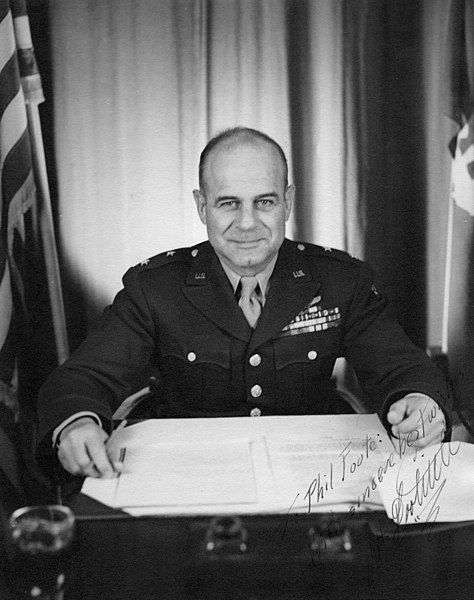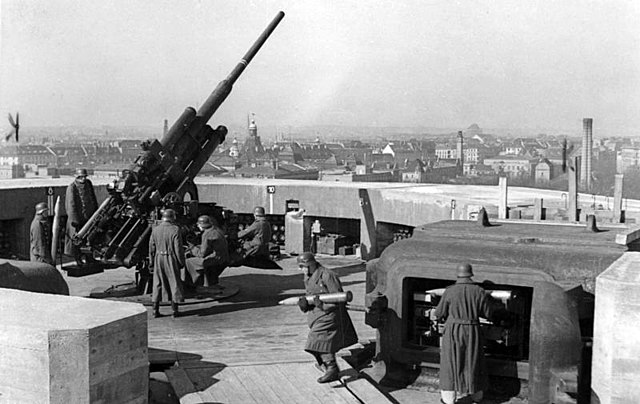Jagdgeschwader 1 (World War II)
Jagdgeschwader 1 (JG 1) "Oesau" was a German World War II fighter wing created in 1939. Between 1940 and 1942, JG 1 operated primarily over the Western Front and northern occupied Europe. During the initial days of the war, JG 1 faced little resistance, apart from occasional Royal Air Force (RAF) excursions. The unit was rarely engaged in large-scale confrontations during this time.
Bf 109 E-3 flown by the original I./JG 1 in France 1940
Photograph of Leutnant Gerd Steiger, Horati Schmude and Dieter Gerhard of 2./JG 1 playing cards in the mess room at Jever. Note the squadron emblems and the bust of Adolf Hitler attached to the walls behind the men.
Bf 109 E, of JG 1 in flight, 1941
Fw 190 A, 5./JG 1, summer, 1942
The Defence of the Reich is the name given to the strategic defensive aerial campaign fought by the Luftwaffe of Nazi Germany over German-occupied Europe and Germany during World War II. Its aim was to prevent the destruction of German civilians, military and civil industries by the Western Allies. The day and night air battles over Germany during the war involved thousands of aircraft, units and aerial engagements to counter the Allied strategic bombing campaign. The campaign was one of the longest in the history of aerial warfare and with the Battle of the Atlantic and the Allied Blockade of Germany was the longest of the war. The Luftwaffe fighter force defended the airspace of German-occupied territory against attack, first by RAF Bomber Command and then against the United States Army Air Forces (USAAF) in the Combined Bomber Offensive.
Maj. Gen. Jimmy Doolittle's fighter tactics against the Luftwaffe fatally disabled its bomber destroyer forces from early 1944 onwards
Anti-aircraft defences on the Flakturm Tiergarten in Berlin, one of the flak towers built from 1940
Destruction of Cologne after the 9 June 1942 attack
German training material for fighter pilot instructions








